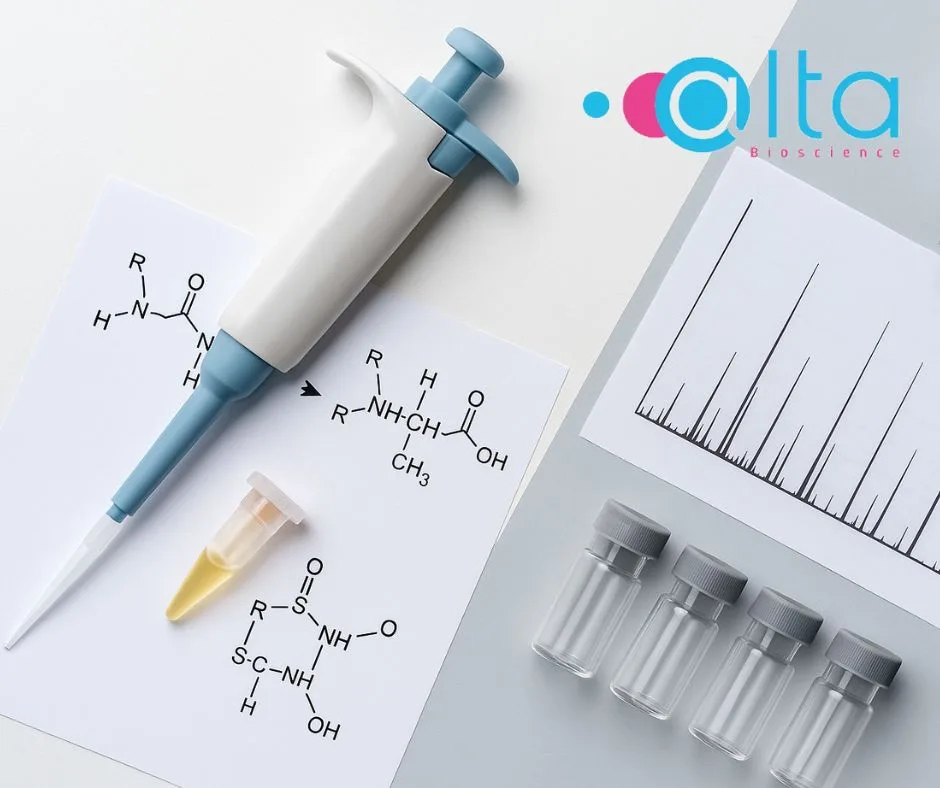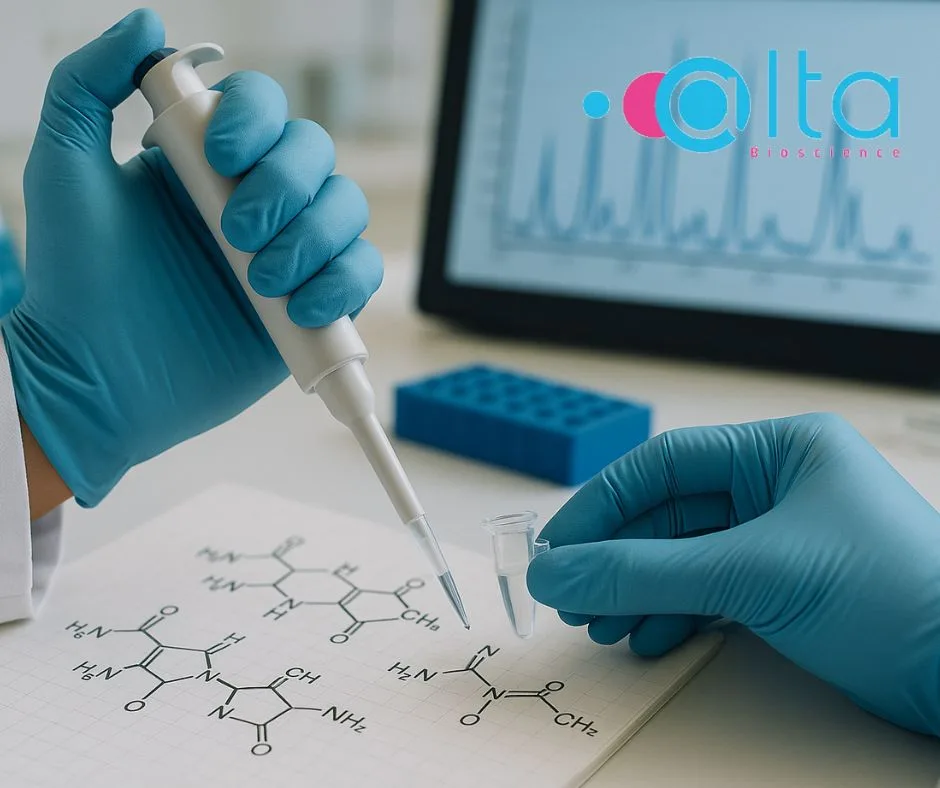European Pharmacopoeia Ph. Eur. 2.2.56 for Amino Acid Analysis
At AltaBioscience, our ISO/IEC 17025:2017 accredited amino acid analysis methodology is in accordance with the European Pharmacopoeia (Ph. Eur.) 2.2.56 Method 1, using ion-exchange chromatography with post-column ninhydrin detection. This validated technique is designed for the quantitative analysis of amino acids in proteins, peptides, and complex biological matrices, and is fully aligned with ICH Q6B, EMA, and FDA regulatory expectations.
The Role of European Pharmacopoeia 2.2.56 in Biopharmaceutical Manufacturing
Prior to the manufacture of biopharmaceuticals, starting materials must be tested to determine their suitability. Specifically, identity, purity and quality must be established to prevent downstream issues or delays in formulation, stability, or efficacy. The European Pharmacopoeia (EP) is a collection of regulatory compliance standards for the quality of medicines in Europe. In particular, Ph. Eur. 2.2.56 Method 1 provides a well-established, compliant framework for amino acid composition analysis, ensuring that the raw materials or therapeutic proteins used in biopharmaceutical manufacturing meet required specifications.
Overview of EP 2.2.56 Method 1: Ion-Exchange Chromatography with Post-Column Derivatisation
EP 2.2.56 Method 1 refers to ion-exchange chromatography with post-column ninhydrin detection, and involves:
- Separation of amino acids based on their ionic properties as they pass through an ion exchange column
- Post-column reaction with ninhydrin to produce a coloured product (usually purple) specific to each amino acid
- Detection using a spectrophotometer (typically at 570 nm or 440 nm). The intensity of the colour being directly proportional to the amount of amino acid present
This methodology provides high sensitivity, precision, and specificity, and is applicable to a wide range of biological samples, including peptides, proteins and antibodies. Indeed, the reaction of ninhydrin with amino acids in post-column derivatisation is specific and does not yield multiple derivatives, which can render quantification using pre-column detection less accurate especially in complex matrices.
Hydrolysis of Proteins and Peptides
Amino acid analysis is typically performed after acid hydrolysis, which cleaves peptide bonds and liberates free amino acids for quantification.
At AltaBioscience, we carry out the hydrolysis as per the EP 2.2.56 monograph, using 6 M hydrochloric acid at 110°C for 24 hours under vacuum to prevent oxidation. The process is performed in sealed tubes to ensure containment and reproducibility.
Where applicable, pre-oxidation using performic acid can be employed to stabilise cysteine (as cysteic acid), improving recovery of this sulfur-containing amino acid. Accurate analysis of cysteine and cystine requires a dedicated method, as performic acid oxidation affects other amino acids and may interfere with their quantification in standard hydrolysis workflows.
Calibration Curve and Internal Standard
To ensure accuracy and traceability, we generate external calibration curves using certified amino acid reference standards. Additionally, we can include an internal standard to monitor chemical and physical losses that may occur during hydrolysis and derivatisation. Ideally the internal standard should be an unnaturally occurring primary amino acid that is stable during hydrolysis, with good linearity, and doesn’t elute with other amino acids. We use norleucine, although nitrotyrosine, and α-aminobutyric acid may also be suitable. As a result, the use of internal standards improves analytical robustness, supports inter-laboratory comparability, and provides critical correction factors in validated quantitative studies.
Why Work With Us
Our ISO/IEC 17025:2017 accredited amino acid analysis service is built around regulatory compliance, scientific rigor, and data quality. We offer:
- Fully validated methods based on Ph. Eur. 2.2.56 Method 1 for any sample type
- High-resolution ion-exchange chromatography with post-column derivatisation
- Quantitative reporting using internal standards and calibration curves
- Duplicate or triplicate testing, where required, for increased data confidence
- Custom reporting formats suitable for regulatory filing
Our Amino Acid Analysis department is experienced in the testing of a wide range of sample types to European Pharmacopoeia 2.2.56 monographs. We can also tailor our methods according to individual clients’ needs for specific analysis detailed in many methods relating to Ph. Eur. 2.2.56.
To discuss all options for your amino acid analysis, please contact us to talk to one of our specialists by emailing info@altabioscience.com or by telephone on +44(0)1527 584495.



